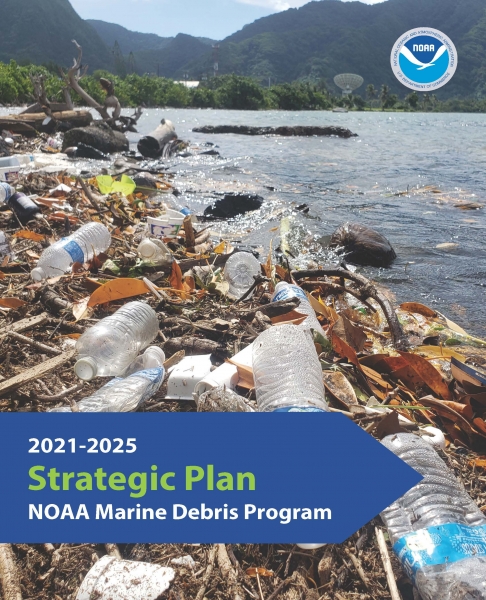We are pleased to share our new Strategic Plan for fiscal years (FY) 2021-2025! This document highlights how the Marine Debris Program (MDP) will work with dedicated staff and partners for the next five years to make a measurable change toward reaching our vision: the global ocean and its coasts free from the impacts of marine debris.
Through this new plan, the MDP will contribute to the health of the Nation’s blue economy through projects that benefit commercial and recreational fisheries, small businesses, and coastal communities by preventing marine debris from entering the marine environment in the first place and removing existing debris from shorelines and coastal areas. Six goals will guide the next five years: prevention, removal, research, response, coordination, and our new goal: monitoring and detection. The FY 2021-2025 Strategic Plan also includes a new focus on using innovative technology and a commitment to diversity, inclusion, and equity.
A global ocean free from the impacts of marine debris is no small feat, but we will strive for nothing less. As we work to implement this new Strategic Plan, we are inspired by the marine debris community’s dedication to finding solutions in the face of obstacles. This plan will drive the MDP to reach more ambitious goals than ever previously set. The path forward is one filled with hope for a healthier ocean and healthier planet.
Check out the new Strategic Plan to see how we will work with our dedicated partners in communities across the country and beyond to tackle the problem of marine debris.


Excellent website with great information and potential solutions for solving the ocean plastic waste problem! I have a question: It seems that lately, more research has been focusing on land littering of plastic waste as a key source of ocean plastic waste rather than direct contamination of ocean waters with plastic waste. I have seen references that state that the vast majority of plastic wastes found in the oceans come from unmanaged landfills, where the plastic waste products are physically broken down by weathering into microplastics. These microplastics are then washed by wind and rain into rivers which carry them out to sea. Various researchers have suggested that up to 80% of all ocean plastic waste enters the oceans as fugitive plastic packaging leaked from land-based waste collection systems including landfills. Does this generally fit with the data that NOAA has been gathering? If so, it suggests that we should be focused more on better management of our land-based disposal of plastics rather than direct plastic waste dumping into oceans. Thanks for your response. Pat Guiney